In This Issue
- IT Spending to $2.1T
- Global Cloud Market
- ISE Cloud Comp Index
- Report from the CEO
- Obscure Privacy Case
- Compliance Guidelines
- Apple China Data Ctr
- File Sys & Obj Storage
- Edge Vaporize Cloud?
- MEC Market Analysis
- Global Fog Mkt Trends
- MSFT Intelligent Edge
- IoT Edge Ecosystems
- Forbes Cloud 100 Cos
- From Cloud to Mobile
- Data Storage Breach
- Coming DCIA Events
Worldwide IT Spending $2.1 Trillion this Year
Excerpted from CIODive Report by Justine Brown
 Worldwide IT spending is expected to increase 4.5% in 2017 to reach $2.1 trillion, according to International Data Corporation (IDC).
Worldwide IT spending is expected to increase 4.5% in 2017 to reach $2.1 trillion, according to International Data Corporation (IDC).
Growth will be led by infrastructure hardware, enterprise software, and mobile devices, according to an IDC announcement.
Worldwide IT spending grew by just 2.5% last year.
IDC predicts the momentum will continue, with worldwide IT spending increasing by another 4% in 2018.
Server spending is expected to grow 4% this year as cloud service providers invest in more data centers to meet demand, while Infrastructure-as-a-Service (IaaS) spending will likely surpass $25 billion in 2017 and more than $50 billion by 2020.
Smartphone spending is expected to increase by 7% this year, improving on last year’s 1% growth.
While new technologies – like augmented reality, artificial intelligence, and robotics – are gaining a lot of attention, IT spending still centers around cloud and mobility, according to IDC.
It’s all about cloud and mobile right now… Read More
Global Cloud Computing Market 2017-2022
Excerpted from Crossroads Today Report
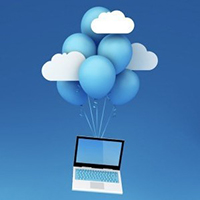 The global cloud computing market is expected to grow at a compound annual growth rate (CAGR) of 24.2 % during 2016-2021.
The global cloud computing market is expected to grow at a compound annual growth rate (CAGR) of 24.2 % during 2016-2021.
The cloud computing market is segmented into service models, deployment models, verticals, pricing components, and geography.
Cloud computing offers significantly more cost-efficient IT resources than alternatives by providing on-demand IT services based on customer actual usage.
Cloud computing is further divided into various major sub-segments such as cloud storage, cloud infrastructure, cloud software, cloud security, cloud platforms, and development.
The cloud software market is estimated to be the fastest growing overall segment.
Cloud computing is increasingly adopted in varied domains including healthcare and the IT sector owing to the rising pressure to curtail healthcare costs while maintaining the quality of care for patients… Read More
What Is the ISE Cloud Computing Index?
Excerpted from The Motley Fool Report by Dan Caplinger
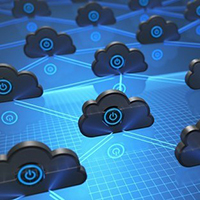 Cloud computing has taken the technology sector by storm, making it possible for major enterprises to gain access to cutting-edge data analytics and storage capacity without building out a huge in-house technology infrastructure framework.
Cloud computing has taken the technology sector by storm, making it possible for major enterprises to gain access to cutting-edge data analytics and storage capacity without building out a huge in-house technology infrastructure framework.
Many of the companies that have helped their clients establish their presence in the cloud have performed quite well for investors, and the ongoing trend toward coming up with new technologies makes it likely that cloud computing companies will remain strong.
The ISE Cloud Computing Index provides a handy benchmark for investors to use to track the budding industry, and you can even invest in an exchange traded fund (ETF) that offers direct exposure to the index to let you take advantage of its future potential for growth.
The ISE Cloud Computing Index was developed by International Securities Exchange ETF Ventures as one of several innovative indexes tracking growing industries and emerging technologies.
The business model for ISE ETF Ventures is to come up with attractive index ideas and then find partners to launch exchange traded products, including ETFs… Read More
Report from DCIA CEO Marty Lafferty

The Electronic Frontier Foundation (EFF) has published its seventh annual privacy scoring report, ranking top technology and telecommunications brands based on how well they protect user data against government intervention, including corporate policies for providing customer notification and challenging National Security Letters (NSLs).
During 2016, for example, the federal government sent nearly fifty-thousand requests for consumer data to Facebook, twenty-eight thousand to Twitter, and more than nine-thousand to Apple.
Overall, the tech industry is providing higher levels of transparency to consumers than in prior years, according to EFF, but broadband network operators are not resisting government overreach to the extent the advocacy group would like.
Highest rated were Adobe, Credo Mobile, Dropbox, Lyft, Pinterest, Sonic, Uber, Wickr, and WordPress; followed by tech giants Apple, Facebook, Microsoft, and Yahoo, which ranked alongside LinkedIn and Slack.
Airbnb, Snap, Tumblr, and Twitter were graded slightly lower.
Amazon and WhatsApp meanwhile ranked just ahead of carriers AT&T, Comcast, T-Mobile, and Verizon.
Both companies have adopted industry-accepted best practices of requiring a warrant for content, issuing law-enforcement guidelines, publishing a transparency report, and advocating for reforms to over-broad NSA surveillance.
EFF believes telecommunications firms can do more, however, to prioritize user privacy over facilitating government data demands, and urges carriers to inform their users before disclosing data to the US government; create public policies for NSL judicial review, publicly support reforms for limiting NSA surveillance, and clarify their third-party data-access policies.
Share wisely, and take care.
An Obscure Case with Big Implications for Privacy
Excerpted from CDT Blog by Kimberly Fong
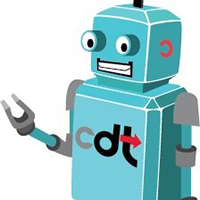 Update: Late last night, a key committee in the House of Representatives passed a measure to curb the SEC’s efforts to use a subpoena to access the content of an American’s email.
Update: Late last night, a key committee in the House of Representatives passed a measure to curb the SEC’s efforts to use a subpoena to access the content of an American’s email.
In an amendment offered by Congressman Yoder (who has also championed the Email Privacy Act, the House’s broader efforts to reform the law) the House Appropriations Committee passed a funding limitation that bars agencies under its jurisdiction (including the SEC) from demanding the content of communication from email providers unless they have a warrant.
While this measure still has to be passed by the full House and the Senate, this is an important step toward curbing this agency power grab until real reform of ECPA can be enacted. (from Chris Calabrese on July 14, 2017)
The government has just fired its latest salvo in a long running effort to circumvent privacy protections for electronic communications.
An obscure case of civil fraud may have dramatic implications for when and how the government can access your emails, texts, and photos held online… Read More
HIPAA Guidelines: Understanding Cloud Compliance
Excerpted from OnRamp Report ny Kirk Wright
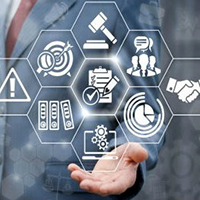 The international healthcare cloud computing market is projected to rise to a valuation of nearly $9.5 billion in 2020 – an annual growth rate of 20.5%.
The international healthcare cloud computing market is projected to rise to a valuation of nearly $9.5 billion in 2020 – an annual growth rate of 20.5%.
For organizations that manage, store or transmit electronic protected health information (ePHI) and are entering the cloud market, staying abreast of the latest HIPAA guidelines is essential.
Published in October 2016, the US Department of Health and Human Services’ (HHS) Guidance on HIPAA & Cloud Computing clarifies the responsibilities of covered entities (CEs), business associates (BAs), and cloud service providers (CSPs).
Understanding compliance in the cloud can be the difference between running a successful business and closing your doors.
You don’t have to take our word for it, though; you can view the OCR “wall of shame” online, including both CEs and BAs that did not follow HIPAA’s cloud guidelines, resulting in serious fines.
Non-compliance due to ignorance will not save you from the legal and financial headaches… Read More
Apple China Data Center Complies with New Law
Excerpted from NY Times Report by Paul Mozur, Daisuke Wakabayashi, and Nick Wingfield
 Apple said Wednesday that it would open its first data center in China, joining a parade of technology companies responding to growing global demands to build facilities that store online data closer to customers.
Apple said Wednesday that it would open its first data center in China, joining a parade of technology companies responding to growing global demands to build facilities that store online data closer to customers.
The move is a response to a strict new law in China that requires companies to store users’ data in the country.
The new data center, in Guizhou, a province in southwest China, is part of a $1 billion investment in the province and will be operated in partnership with a local data management company, Apple said.
The move is part of a worldwide trend regarding the security and sovereignty of digital data.
Microsoft, Amazon and Facebook are among the big American technology companies plowing billions of dollars into building data centers in Germany, the Netherlands, France and other countries.
While some of the expansion is for technical reasons – the online services operate faster when they are near customers – the companies are also reacting to growing pressure from European governments and customers to maintain some control over their data… Read More
Distributed File Systems & Object Storage Industry
Excerpted from WhaTech Channel Report
 The Distributed File Systems and Object Storage Industry Report focuses on price, sales, revenue, and growth rates, as well as the types of key manufacturers, through interviewing key manufacturers.
The Distributed File Systems and Object Storage Industry Report focuses on price, sales, revenue, and growth rates, as well as the types of key manufacturers, through interviewing key manufacturers.
Distributed file systems and object storage industry development trends and marketing channels are also analyzed; the feasibility of new investment projects are assessed; and overall research conclusions offered.
With its tables and figures, the report provides key statistics on the state of the industry, and is a valuable source of guidance and direction for companies and individuals
First, development policies and plans are discussed as well as manufacturing processes and cost structures, which are also analyzed.
Second, this report also states import/export consumption, supply and demand figures, costs, pricing, revenue, and gross margins.
Third, by regions, this report focuses on the sales (consumption), production, import, and export of distributed file systems… Read More
Will Edge Computing Vaporize the Cloud?
Excerpted from CIO Report by Gary Eastwood
 For years, cloud computing has disrupted markets and revolutionized society, changing the way we upload and share data.
For years, cloud computing has disrupted markets and revolutionized society, changing the way we upload and share data.
In the era of the smartphone and tablet, everyday consumers rely on easy-to-use cloud computing, essentially having come to take it for granted.
Is it really true, then, that edge computing could come to replace the cloud?
Like cloud computing before it, edge computing could stand to revolutionize the way we use our technology and fundamentally reshape the 21st century.
This exciting technology, which processes data away from a centralized network and rather sticks to the “edges”, hence the name, is likely to take hold soon.
So, what exactly does the future of edge computing have in store for consumers?
As the digital era hurdles ever onwards, massive sums of data could come to clog up data centers as compression methods fail to keep up with our ever-growing info glut… Read More
Mobile Edge Computing (MEC) Market
Excerpted from Digital Journal Blog
 With the significant rise in the demand for low latency computing and a better quality of experience (QoE), the global market for mobile edge computing (MEC) is displaying high growth in its size.
With the significant rise in the demand for low latency computing and a better quality of experience (QoE), the global market for mobile edge computing (MEC) is displaying high growth in its size.
The surge in the network traffic, growing incidence of data explosion, and the increasing demand for low energy consumption technologies are projected to propel this market substantially in the years to come.
A report by Transparency Market Research (TMR) states that the worldwide MEC market, which stood at $73.8 million in 2016, is anticipated to expand at a remarkable compound annual growth rate (CAGR) of 51.0% between 2017 and 2025 and reach a value of $4.23 billion by the end of 2025.
In this blog, experts at TMR provide answers to some of the significant queries about the global MEC market.
What are the prime factors that influence the growth of the global mobile edge computing market?
The global market for MEC is driven by a number of factors, among which, the low latency networks, specifically for media and entertainment purposes, is the most prominent one… Read More
Global Fog Computing Market Trends
Excerpted from Research Beam Report
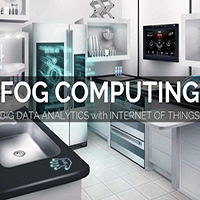 Research Beam added a latest report titled Global Fog Computing Market Size, Status and Forecast 2022.
Research Beam added a latest report titled Global Fog Computing Market Size, Status and Forecast 2022.
The report provides a detailed information and analysis of production, revenue, drivers and opportunities, key manufacturers, and competitive landscape.
Furthermore, current market trends and growth opportunities are discussed along with extensive analysis of each segment for the historic period, 2012-2017 and the forecast period, 2017-2022.
The report provides insights on manufacturing cost structure, marketing channels, marketing channels, and distributors and traders analysis.
This study is helpful for market players, investors, and shareholders acquire thorough information and statistics to make better decisions for the future.
An overview of the Global Fog Computing Market is offered on the basis of product overview and detailed segmentation of the industry… Read More
How Microsoft’s Intelligent Edge Affects Mobile
Excerpted from Windows Central Report by Jason Ward
 During Build 2017 Microsoft highlighted its intelligent cloud and intelligent edge strategy. But what exactly is the intelligent edge?
During Build 2017 Microsoft highlighted its intelligent cloud and intelligent edge strategy. But what exactly is the intelligent edge?
Microsoft’s growing investments in cloud computing and a recent reorg reflecting those investments are sure to bring greater attention to Microsoft’s intelligent edge and mobile strategy.
To understand the intelligent edge, however, we must have a basic grasp of the intelligent cloud and the internet of things (IoT).
Cloud computing is using a network of remote servers hosted on the Internet, rather than a local server or personal computer, to store, manage, and process data.
Simply put the Internet, or cloud, has enabled computing that is no longer limited to a local hard drive but allows access to data and services that exist on other internet-connected devices.
Microsoft’s OneDrive, OneNote, the online versions of Office, Google’s productivity suite, Apple’s iCloud, and DropBox are examples… Read More
IoT Ecosystems: It’s Time to Live on the Edge
Excerpted from IOT Agenda Blog by Uday Davuluru
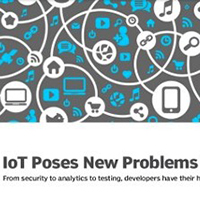 Most modern internet of things (IoT) ecosystems rely on a permanent connection with the internet.
Most modern internet of things (IoT) ecosystems rely on a permanent connection with the internet.
Devices constantly send and receive data to a data center somewhere in the cloud.
The obvious benefit: users can monitor and control their system at anytime from anywhere.
The obvious disadvantage: in case of connection loss, most systems stop working.
Why are we willing to take that risk?
The IoT world may be exciting, but there are serious technical challenges that need to be addressed, especially by developers.
Okay, the IoT is called internet of things because the internet plays a major role in the whole idea.
Devices are not isolated anymore in their local environment.
They can interact at any time with the outside world… Read More
Forbes Cloud 100: Hottest Companies for 2017
Excerpted from Forbes Report by Alex Konrad
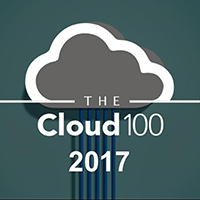 The world is moving online, and business is going with it.
The world is moving online, and business is going with it.
The companies that make that journey possible – providing everything from infrastructure to security, chat tools to marketing and HR – make up the wide-ranging and red hot category of cloud computing.
For the second year, the Forbes Cloud 100 recognizes the best and brightest of the cloud.
Compiled with the help of partners Bessemer Venture Partners and Salesforce Ventures, the list tracks candidates by operating metrics such as revenue and funding, with the help of 25 of their public cloud CEO peers.
The companies of the Cloud 100 have worked with the world’s largest corporations and solved small business headaches alike, fixed people’s grammar online and traced government sponsored hacking attacks.
They’re led in 2017 by Stripe, the online payments company founded by Irish-born Patrick Collison and his brother John, valued at $9.2 billion.
Hundreds of thousands of businesses use Stripe’s software to handle sales and other transactions on their sites… Read More
Shifting Workloads from Cloud to Mobile Devices
Excerpted from Data Center Frontier Report by Rich Miller
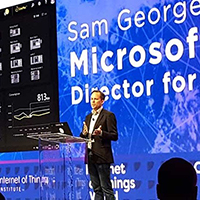 Our things are getting smarter and more powerful, bringing the computing power of the cloud into devices in our pockets.
Our things are getting smarter and more powerful, bringing the computing power of the cloud into devices in our pockets.
The trend is enabled by advances in hardware and software, as startups and cloud platforms alike seek to capitalize on the disruptive changes in the technology landscape.
The power of these new chips and devices will help shape America’s evolving IT infrastructure, moving more workloads and tasks to the very edge of the network.
The internet of things (IoT) and artificial intelligence (AI) are bringing intelligence to mobile devices and industrial equipment, shifting computing power and algorithms to devices like smartphones and tablets, as well as appliances on factory floors and hospitals.
“You can now put more computational ability at the very edge of the network, essentially making it as if the cloud is in your back pocket,” said Ed Chan, Senior VP for Technology Strategy at Verizon, at a recent conference.
“That’s kind of how we envision the way that 5G (next-generation connectivity) is going to change the world… Read More
Third-Party Data Storage Breach Overblown
Excerpted from Consumer Affairs Report by Mark Huffman
 The technology media is reporting a data breach at Verizon’s third-party cloud storage that may have exposed millions of customer service records.
The technology media is reporting a data breach at Verizon’s third-party cloud storage that may have exposed millions of customer service records.
Verizon, meanwhile, is saying no one’s records were compromised.
ZD Net Wednesday that a security flaw at a Verizon vendor exposed the records of 14 million consumers who called Verizon customer service in the first half of 2017 (later reports put the figure at 6 million).
The report says the records were unprotected and could have been easily downloaded. But Verizon says they weren’t.
“We have been able to confirm that the only access to the cloud storage area by a person other than Verizon or its vendor was a researcher who brought this issue to our attention,” Verizon spokesman David Samberg said.
“In other words, there has been no loss or theft of Verizon or Verizon customer information.”
The vendor was supporting an approved initiative to help Verizon improve a call-center portal… Read More
Coming Events of Interest
Industry of Things World Europe — September 18th and 19th in Berlin, Germany. Join more than 1,000 high-level executives to rethink your technology and business strategy for scalable, secure, and efficient IoT.
IoT Solutions World Congress — October 3rd through 5th in Barcelona, Spain. This event has grown enormously in no time and is an excellent barometer and source of information, inspiration, collaboration and transformation.
2017 Storage Visions Conference — October 16th in Milpitas, CA. “New Visions for Digital Storage” will bring together the vendors, end-users, researchers, and visionaries who will meet the growing demand for digital storage for all aspects of unstructured and lightly structured data.
INTRASECT— November 1st and 2nd in Washington, DC. The first conference of its kind to engage key stakeholders in a comprehensive and engaging examination of existing and future regulatory policy governing the usage of commercial autonomous vehicles.
Government Video Expo & National Drone Show — November 28th-30th in Washington, DC. The 22nd annual GVE will feature a full exhibit floor with numerous training options, free seminars, keynotes, networking opportunities, and five new educational pavilions.
Delivery of Things World 2018 — April 23rd and 24th in Berlin, Germany. Meet the most influential DevOps practitioners and experts and discuss what DevOps means for your business.
